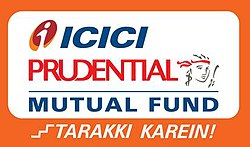Flexi Cap Mutual Fund

1Y
3Y
5Y
SI
Nav
Risk

1Y
3Y
5Y
SI
Nav
Risk

1Y
SI
Nav
Risk

1Y
3Y
5Y
SI
Nav
Risk

1Y
SI
Nav
Risk

1Y
3Y
5Y
SI
Nav
Risk

1Y
3Y
SI
Nav
Risk

1Y
3Y
SI
Nav
Risk

1Y
3Y
5Y
SI
Nav
Risk

1Y
SI
Nav
Risk
A Flexi Cap Fund is a type of equity mutual fund introduced by SEBI in November 2020. These funds allow managers to invest across large-cap, mid-cap, and small-cap stocks in any proportion, as long as at least 65% of the portfolio remains invested in equities and equity-related instruments.
Unlike multi-cap funds, which require fixed minimum allocations to each market capitalization, flexi-cap funds provide complete flexibility to move between market capitalizations based on market opportunities and trends.
Why They Matter Now
As of June 30, 2025, the Sensex had surged by around 10,920 points from its April lows, reaching approximately 84,058. Analysts attribute this market momentum to renewed investor confidence, economic growth, and political stability. Flexi-cap funds have emerged as primary beneficiaries of this rally due to their ability to adapt to such shifts quickly.
The Parag Parikh Flexi Cap Fund has recently crossed ₹1 lakh crore in AUM, making it the largest in its category. Over the last five years, it delivered a CAGR of approximately 24.7%, and around 18.5% over three years. It also boasts a strong Sharpe Ratio of 1.44, indicating impressive risk-adjusted returns.
Top Performers to Watch
| Fund | 5‑Year CAGR | AUM (₹ Cr) | Expense Ratio |
|---|---|---|---|
| Quant Flexi Cap Fund | ~30–35% | ~7,000 | ~0.61% |
| HDFC Flexi Cap Fund | ~22–31% | ~66,000–75,000 | ~0.79% |
| JM Flexicap Fund | ~23–29% | ~5,300–5,600 | ~0.55% |
| Franklin India Flexi Cap Fund | ~21–29% | ~17,000–18,000 | ~0.90% |
What's Behind This Success?
Fund managers can shift capital fluidly across market caps. For example, during recent volatility, some funds increased mid-cap exposure to capitalize on undervalued opportunities.
- Tactical Risk Management: Top funds, such as Parag Parikh, maintain a 10–15% cash reserve for opportunistic investments during market corrections. They also avoid high-volatility stocks and maintain a diversified allocation.
- Global Exposure: Some flexi cap funds offer international exposure—Parag Parikh, for example, has around 13% of its holdings in overseas markets. This provides a hedge against domestic market downturns.
- Long-Term Focus: Several flexi cap funds now boast 10-year track records with strong compounding returns, making them attractive for long-term wealth creation.
Performance Snapshot
- 10‑Year SIP Performance: Funds like Parag Parikh have delivered over 20% XIRR on 10-year SIPs.
- Category Size: The flexi-cap category has an estimated ₹4.35 lakh crore in assets under management (AUM), making it the second-largest equity mutual fund category in India.
- Investor Inflows: In September 2024 alone, Parag Parikh and HDFC Flexi Cap Funds received net inflows of ₹3,950 crore and ₹2,788 crore, respectively, indicating a rise in investor confidence.
Why Choose a Flexi Cap Fund
- Flexibility: No restrictions across market caps.
- Diversification: One fund covers the full equity spectrum.
- Opportunity Seeking: Actively managed to chase growth.
- Downside Protection: Some funds maintain a cash position or hold defensive stocks during downturns.
Risks to Consider
- Manager Risk: Performance depends heavily on the fund manager's ability to time the market.
- Volatility: Funds with higher exposure to small- and mid-cap companies can be more volatile.
- Large-Cap Bias in Big Funds: Larger AUM may limit flexibility due to liquidity concerns.
- Taxation: Long-term capital gains (LTCG) over ₹1 lakh are taxed at 10%; short-term gains (STCG) at 15%; dividends are added to your income and taxed accordingly.
Should You Invest?
- One-stop exposure across the market cap spectrum
- Active management and strategic allocation
- Higher return potential over the long term
However, due to their dynamic nature, they are better suited for investors with moderate to high risk tolerance. It's advisable to pair flexi-cap funds with stable, large-cap, or hybrid funds to achieve a balanced portfolio.
Get In Touch
Interested in exploring more about JezzMoney Mutual Fund Distributors Software? Submit the form, and we will respond quickly.
Get Expert Advice on Investment in Mutual Funds!
- Certified mutual fund distributors around India will reach out to help you build your future.
- Connect with trusted mutual fund distributors and find them from your city and pincode area.
- JezzMoney is only the mediator to help you connect with these certified professionals.
- It is your obligation to gather accurate information when you receive contact from our platform.